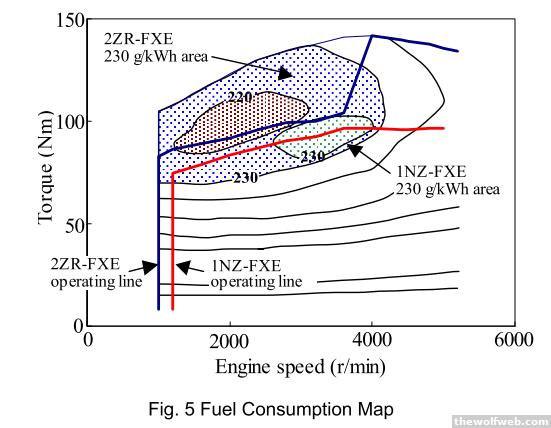Appreciate your response, however at WOT racing engines are fuel thirsty. The figures of a Prius engine you mention (in the link) are rather at part throttle "sweet spot" and not at WOT.rscsr wrote: Your assumption of BSFC is 0,45 * 453,592/0,746=273 g/kWh
This is a rather high fuel consumption.
A more reasonable fuel consumption would be that of a Prius engine (Because F1 engines counted as really efficient engines even in V10 times, due to resistance reduction done to increase power, and the fuel efficiency just goes up due to the move to these engines). It has a BSFC of 225 g/kWh. This means (100kg/hr)/(0,225kg/kWh)=444kW=596bhp.
Check Wiki BSFC http://en.wikipedia.org/wiki/Brake_spec ... onsumption
"The following table takes selected values as an example for the minimum specific fuel consumption of several types of engine."
I will grant, that in it's day the V10 was the most fuel efficient racing engine, however comparing it's efficiency to a production one is misguided. These are two different machines, developed to serve two different tasks.
For years, all US OEM's have been developing their street engines to run at the centroid of the EPA cycle, which was approx 1500RPM and 38 PSI bmep. I would expect that Toyota adopted the same target performance criteria for fuel consumptions and emissions (Prius).
In case of an F1 engine running at WOT, especially a turbo one you will undoubtedly see 0.890-0.920 lambda, which means 10% richer than stoich. BSFC figure of 0.45-0.50 lb/HP-hr is not likely to be very far off and as such I stand by my HP estimate.


